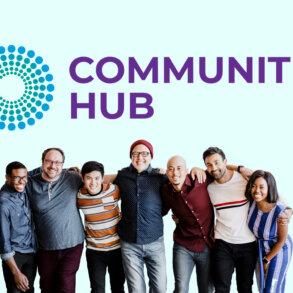By Menno van Dijk, Merel Post and Valeria Mecozzi and published on thnkinsights.com
The THNK School of Creative Leadership has grown to more than 300 people in its first four years. This rapid growth rate makes it necessary to understand the needs and potential of such a rich and diverse group of belonging. To go beyond our current understanding of a community, we needed to research religious groups, guilds, pioneer groups, families, the mafia, political parties, cults, online communities, alumni groups, movements, and tribes throughout history.
We immediately compared the differences and explored the commonalities that defined a segment, a network and a community. We explored the world, and understood that a community stands alone by bringing together people that share a common belief, a lifestyle preference, or inherited customs. Think about the bonding agents of a fraternity, or a political movement, such as the Suffragettes.
Though each group’s purpose inevitably varies, the solidifier is always within the boundaries of a shared belief or goal. A school like THNK, made up of a global group of leaders, truly believes in changing the world for the better and is actively participating in making that happen, by using shared language, experiences, and a tribal assurance of belonging.
Communities, however, will dissipate if neglected. They need nourishment and dedication from its members through traditions, behaviors, and a sharing of knowledge. We’ve broken down the elements of a community by giving them eight specific design characteristics.
COLLECTIVE INTENTION
Roughly 1,800 of the world’s 10,000 bird species migrate long distances each year in response to the seasons. Many of these migrations are north-south, with species feeding and breeding in high northern latitudes in the summer and moving some hundreds of kilometers south for the winter. Some species extend this strategy to migrate annually between the Northern and Southern Hemispheres.
A community begins its mission when its members decide to start collaborating towards a common purpose. The real challenge is to then create the means for engaging the members in a way that brings new possibilities into being. The purpose must have a sense of urgency, which in turn makes people more likely to step up. The topic or challenge needs to be meaningful enough to lend itself to a real commitment, and has to have a bias to the future – a better world to create together, for instance.
This purpose, this raison d’être to protect or pursue a collective intention, also needs to be aligned with individual self-interest, while at the same time the added value of collaborating needs to be clear for everyone. When this goal is a shared soul-feeding passion, this joint caring becomes a bond of identity. It is inspiring to discover others who share the same passion and purpose.
The risk that can surface here is how an all-encompassing common purpose can literally become “everything to everyone”. The community can run the risk of becoming isolated and insulated from the outside world.
DISTINCTIVE IDENTITY
The Schutterij -or civic guard or town watch- was a defensive military support system for the local civic authority in the Netherlands. Its officers were wealthy citizens of the town appointed by the city magistrates. Members were expected to buy their own equipment: this entailed the purchase of a weapon and uniform. The idea was that out of every hundred inhabitants, three belonged to the schutterij.
A community perceives itself as distinct in some respect from the larger society within which it exists. It might even have an opponent, a force it fights against or needs to protect itself from, thus creating an “us versus them” environment. To define their own distinctiveness, communities develop and foster common languages, rituals, symbols, moments, and stories. This results in a shared culture that enables the community to act together.
Most communities are selective about who can join: only those with the same passion and purpose, the same qualities, the same values. As a result, community members feel proud, privileged and honored to be a member. What members always like most about their community are –simply– the people.
The membership lifecycle goes from recruits, to novices, regulars, leaders, and finally, elders. Every member feels a responsibility for recruiting potential members of the community and helping new recruits navigate their way into the community. At the beginning of their lifecycle, community members share experiences that are rich with rituals to immerse them into the community culture.
Celebration is a big part of common culture that creates an opportunity to bond together and establish deep trust. Communities celebrate new members, highlight accomplishments the community has achieved and other key events, and recognize the contributions of their leaders and elders.
The community is ultimately defined through joint possession, enjoyment and liability. Everyone is considered an owner, an investor and a contributor, thus creating the feeling of true belonging.
A WORKING PRACTICE
During World War II, the Red Cross supplied patterns for sweaters, socks, mufflers, fingerless mitts (which allowed soldiers to keep their hands warm while shooting), toe covers (to be used with a cast), stump covers and other garments. Surviving patterns show that these knitting patterns were typed and retyped with carbon-paper copies and shared among the knitters. Many knitters chose to knit the same item in the same size again and again so that they could memorize the pattern and produce pieces more quickly.
The magic of the community is in the shared act. Community members find each other, work together, support each other, and achieve success together. This is the joy of doing meaningful work together with like-minded people, with your friends. Typical activities include: knowledge creation, the exploration of point-of-views, and training; lobbying and promotion of the collective intention; practicing the craft through entrepreneurship, development of activities, advisory services, and investments.
Communities have a collective intention – however tacit and distributed – to steward their specific domain of knowledge and to sustain learning about it. Communities, therefore, foster curiosity, learning and professional mastery –all community member driven, with quality content. They offer a learning partnership: ongoing education, either through peer-based learning, facilitating courses, or providing knowledge for members. They organize information flows, helpful linkages, joint problem solving, and knowledge creation. This results in life-long learning.
Communities depend on financial contribution from their members. This is not a “payment for services rendered”, or a reflection of the value received. Instead it is a contribution to further the collective cause, to grow the community, and share in the fortune begotten.
A SAFE PLACE
In order to build a safe home, you need a strong construction. When members of the Amish community need a new house to be built, or a barn raised, men come from miles around to help out.
Communities need a home: a safe place, a place to celebrate, a place to be together. This place is beautiful, welcoming, a place to show visitors with pride. The design of the home represents the community’s culture, beliefs and heritage. After all, the strongest connections happen in the real world, not online.
Belonging to a home provides a safe place: what happens inside, stays inside. Community members respect each other’s privacy and are mindful of the sensitive environments in which some of them operate. The community protects its members in the outside world and they can depend on each other for shelter, support and access. Because its members can be traveling nomads, the community needs something mobile, sticky, lightweight: a life tool to stay connected even when they are not physically together.
SOUL-FEEDING EVENTS
What better way to feed yourself and your soul than by sharing food together? We can all relate to the image of a big Italian family having a Sunday lunch together at a long, white table-clothed table in the garden.
Celebration and connection is key. Communities organize events, such as a big annual festival and several smaller regional events throughout the year. These facilitate real-life connections by stimulating people to come together. How to engage matters as much as what to engage on: the way communities bring people together matters as much as the content of what to share among the participants.
PERSONAL CONNECTIONS
A castell (Catalan pronunciation: [kəsˈteʎ]) is a human tower built traditionally in festivals at many locations throughout Catalonia. At these festivals, several colles castelleres, or teams, often succeed in building and dismantling a tower’s structure. In November 2010, castells were declared by UNESCO to be amongst the Masterpieces of the Oral and Intangible Heritage of Humanity.
People connect. These connections create ties between the people, and this is the social capital that makes the sum bigger than its parts. In a way, a community is a group of people connecting to one another, to their leaders, and to an idea.
They need to be able to find each other easily and to stay in regular contact to keep the connections alive. But most of all, being connected is the feeling of togetherness. It is the set of relationships, personal interactions, and links among the community members each with personal (not only professional) reasons to connect: you might even say a circle of friends.
There is something unpredictable about the dynamics of the network: a message boomerangs back with totally unexpected response and a brand new follower. This defines the resourcefulness of the community.
On the downside, they risk becoming entirely self-absorbed while standing with their backs to society. If a community identifies too strongly with itself, it becomes prone to the phenomenon of groupthink: it starts to close, or inbreed. External connectivity is a good way to shake it up and keep boundaries open.
DISTRIBUTED ROLES
Puppetry is a very ancient art form, thought to have originated some 3000 years ago. Puppets have been used to animate and communicate the ideas and needs of human societies. Puppetry usually involves storytelling and wherever there is a story to be told, there are different roles to play to complete that story.
Community members will be accountable and committed to what they have a hand in creating. As a result, the community operates in small, self-governed groups, each a microcosm of the larger system. Most communities divide themselves into local chapters, circles, or groups with similarities that want to connect. The small groups are thus a representation of the whole.
Communities typically have a shared governance of some sort. Leadership typically provides resources, structure, processes, and tools. Most importantly, it provides overall messaging, reinforcing the mission, the state of the community and the priorities. Community leaders should shift the context within which people gather, name the debate through powerful questions, and listen rather than defend or provide answers. They act more as facilitators than managers, inviting people into the conversation, being a connector between groups within the community.
Ideally, a community is self-structured and self-regulatory. Every community member is responsible for the value it adds to the community, thus also responsible for the values at large. There are several roles that community members can play during their lifecycle; they can also hold various or multiple positions at the same time.
Some different contributing roles that can be distinguished: “Connectors” link people together to solve a request for help, to tighten relationships, create opportunities, and gain knowledge within the community, both inside and outside. “Instigators” realize the ideas emerging in the community by pursuing these and orchestrating the right teams. “Collaborators” reach out to members within the community by offering support and working together on joint projects, while the “Creators” make individual contributions that benefit the community and its cause. Finally, “Sharers” are continuously on the lookout for new insights that they can share with the entire community.
COMMUNITY PLATFORM
Players of the extremely popular role-playing videogame World of Warcraft can meet and interact in multiple platforms, both online and in real-life. Annual conferences are held in honor of the game around the world, as are dress-up events, online markets for sale and exchange, and many more grassroots and, self-designed meetups between different groups.
A community platform – a website or mobile application – is not a necessary condition for a community to thrive. The platform works as reflection of the health and vibrancy of the community. A platform that reflects the community would include the introduction of new community members, plus community member news. It would be a source of inspiration regarding the community’s mission; a place to find supporting content and knowledge and learning, and access experts; and a platform that connects discussions and chats, organizes activities, announces events, and orchestrates resources.
BRINGING IT ALL TOGETHER
These broadly-encompassing characteristics can be applied to many different kinds of communities yet still maintain themselves as unique entities that embody the world we live in. Communities can also vary in typology: some are led by a unique figure guiding the rest of the group, while others share the entire authority of each role, leaving them to self-govern in a more stable environment. This shared effort of roles guarantees a higher probability of enduring, past competitors or self-made implosion.
As THNK begins to solidify itself as a force strengthened by numbers, a distinct understanding of its community’s -and its individual members’- role will be a vital part of it making a real difference in the world.




